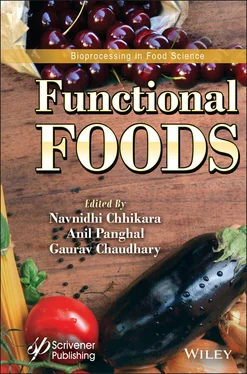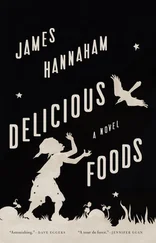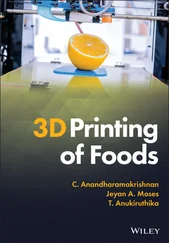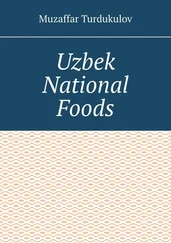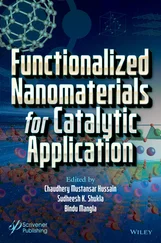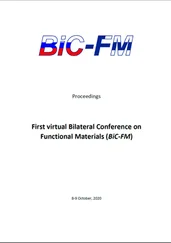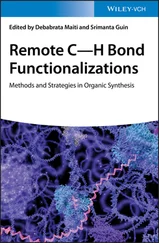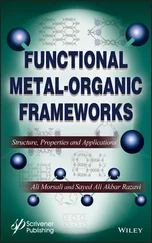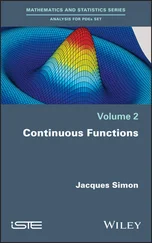1 ...6 7 8 10 11 12 ...31 35. Sun-Waterhouse, D. (2011). The development of fruit-based functional foods targeting the health and wellness market: a review. International Journal of Food Science & Technology, 46(5) , 899-920.
36. Sebastià N, Montoro A, Mañes J, Soriano JM. A preliminary study of presence of resveratrol in skins and pulps of European and Japanese plum cultivars. J Sci Food Agric . 2012;92:3091–3094. doi: 10.1002/jsfa.5759.
37. Shrikanta A, Kumar A, Govindaswamy V. Resveratrol content and antioxidant properties of underutilized fruits. J Food Sci Technol . 2015;52(1):383–390. doi: 10.1007/s13197-013-0993-z.
38. Gambini, J., Inglés, M., Olaso, G., Lopez-Grueso, R., Bonet-Costa, V., Gimeno-Mallench, L., ... & Borras, C. (2015). Properties of resveratrol: in vitro and in vivo studies about metabolism, bioavailability, and biological effects in animal models and humans. Oxidative medicine and cellular longevity, 2015 .
39. Sebastià, N., Montoro, A., León, Z., & Soriano, J. M. (2017). Searching trans-resveratrol in fruits and vegetables: A preliminary screening. Journal of food science and technology, 54(3) , 842-845.
40. Szkudelska, K., & Szkudelski, T. (2010). Resveratrol, obesity and diabetes. European journal of pharmacology, 635 (1-3), 1-8.
41. Cantos, E., Espin, J. C., Fernandez, M. J., Oliva, J., & Tomas-Barberan, F. A. (2003). Postharvest UV-C-irradiated grapes as a potential source for producing stilbene-enriched red wines. Journal of Agricultural and Food Chemistry , 51, 1208–1214.
42. Cantos, E., Espin, J. C., & Tomas-Barberan, F. A. (2001). Postharvest induction modeling method using UV irradiation pulses for obtaining resveratrol-enriched table grapes: a new ‘functional’ fruit? Journal of Agricultural and Food Chemistry , 49, 5052–5058.
43. González-Barrio, R., Vidal-Guevara, M.L., Tomás-Barberán, F.A. & Espín J.C. (2009) Preparation of a resveratrol-enriched grape juice based on ultraviolet C-treated berries. Innovative Food Science and Emerging Technologies, In Press, doi: 10.1016/j.ifset.2009.01.004
44. Saiz YH. Spanish Council for Scientific Research. Available from: http://www.geoscopio.org/est/gmms/otten/Postharvest treatment of table grapes to increase the content of the antioxidant and anticarcinogenic component resveratrol using UV irradiation pulses. CSIC AGRO012 4803.htm. Accessed Apr. 15, 2011.
45. Kuršvietienė, L., Stanevičienė, I., Mongirdienė, A., & Bernatonienė, J. (2016). Multiplicity of effects and health benefits of resveratrol. Medicina, 52 (3), 148-155.
46. Bhat, K. P., & Pezzuto, J. M. (2002). Cancer chemopreventive activity of resveratrol. Annals of the New York Academy of Sciences, 957 (1), 210-229.
47. Grabowska, M., Wawrzyniak, D., Rolle, K., Chomczyński, P., Oziewicz, S., Jurga, S., & Barciszewski, J. (2019). Let food be your medicine: Nutraceutical properties of lycopene. Food & function, 10(6) , 3090-3102.
48. Story, E. N., Kopec, R. E., Schwartz, S. J., & Harris, G. K. (2010). An update on the health effects of tomato lycopene. Annual review of food science and technology, 1 , 189-210.
49. Domínguez, R., Gullón, P., Pateiro, M., Munekata, P. E., Zhang, W., & Lorenzo, J. M. (2020). Tomato as potential source of natural additives for meat industry. A Review. Antioxidants, 9 (1), 73.
50. Farajian, P., Katsagani, M., & Zampelas, A. (2010). Short-term effects of a snack including dried prunes on energy intake and satiety in normal-weight individuals. Eating behaviors, 11(3) , 201-203.
51. Nawirska, A. & Kwaśniewska, M. (2005). Dietary fibre fractions from fruit and vegetable processing waste. Food Chemistry , 91, 221–225.
52. Chau, C.F. & Huang, Y.L. (2004). Characterization of passion fruit seed fibres—a potential fibre source. Food Chemistry , 85, 189–194.
53. Jiang, T. A. (2019). Health benefits of culinary herbs and spices. Journal of AOAC International, 102(2) , 395-411.
54. Hewlings, S. J., & Kalman, D. S. (2017). Curcumin: a review of its’ effects on human health. Foods, 6 (10), 92.
55. Li, H., Sureda, A., Devkota, H. P., Pittalà, V., Barreca, D., Silva, A. S., ... & Nabavi, S. M. (2020). Curcumin, the golden spice in treating cardiovascular diseases. Biotechnology advances, 38 , 107343.
56. Lim HS, Park S.H., Ghafoor K., Hwang SY, Park J. Quality and antioxidant properties of bread containing turmeric (Curcuma longa L.) cultivated in South Korea. Food Chem . 124: 1577-1582 (2011).
57. Stanić, Z. (2017). Curcumin, a compound from natural sources, a true scientific challenge–a review. Plant Foods for Human Nutrition , 72 (1), 1-12.
58. Alehosseini, A., Gómez-Mascaraque, L. G., Martínez-Sanz, M., & López-Rubio, A. (2019). Electrospun curcumin-loaded protein nanofiber mats as active/bioactive coatings for food packaging applications. Food Hydrocolloids , 87 , 758-771.
59. Swanson, D., Block, R., & Mousa, S. A. (2012). Omega-3 fatty acids EPA and DHA: health benefits throughout life. Advances in nutrition , 3 (1), 1-7.
60. Godoy, L. C., Franco, M. L. R. S., Franco, N. P., Silva, A. F., Assis, M. F., Souza, N. E., Matsushita, M., & Visentainer, J. V. (2010). Análise sensorial de caldos e canjas elaborados com farinha de carcaças de peixe defumadas: Aplicação na merenda escolar. Ciência e Tecnologia de Alimentos, 30, 86-89.
61. Justen, A. P., Franco, M. L. R. S., Monteiro, A. R. G., Mikcha, J. M. G., Gasparino, E., & Delbem, A. B. (2011). Inclusión de harina de pescado en snacks. Infopesca Internacional, 47, 35-38.
62. Franco, M. L. R. S., Abreu, B. B., Saccomani, A. P. O., Vesco, A. P. D., Vieira, V. I., Mikcha, J. M. G., Gasparino, E., & Delbem, A. C. B. (2013). Elaboración De cookies y galletas con inclusión de harina de pescado. Infopesca Internacional, 53, 30-33.
63. Shaviklo, A. R. (2015). Development of fish protein powder as an ingredient for food applications: a review. Journal of food science and technology, 52(2) , 648-661.
64. Goes, E. S. D. R., Souza, M. L. R. D., Michka, J. M. G., Kimura, K. S., Lara, J. A. F. D., Delbem, A. C. B., & Gasparino, E. (2016). Fresh pasta enrichment with protein concentrate of tilapia: nutritional and sensory characteristics. Food Science and Technology, 36 (1), 76-82.
65. Xu, Y., Ye, J., Zhou, D., & Su, L. (2020). Research progress on applications of calcium derived from marine organisms. Scientific Reports, 10 (1), 1-8.
66. Choi, J. S., Lee, H. J., Jin, S. K., Lee, H. J. & Choi, Y. I. Effect of oyster shell calcium powder on the quality of restructured pork ham. Korean J. Food Sci. Technol . 34, 372–377 (2014).
67. Biesalski, H. K. (2005). Meat as a component of a healthy diet — Are there any risks or benefits if meat is avoided in the diet? Meat Science , 70, 509–524.
68. Decker, E. A., & Park, Y. (2010). Healthier meat products as functional foods. Meat Science , 86(1), 49-55.
69. Zhang, W., Xiao, S., Samaraweera, H., Lee, E. J., & Ahn, D. U. (2010). Improving functional value of meat products. Meat Science , 86(1), 15–31.
70. Khan, M. I., Arshad, M. S., Anjum, F. M., Sameen, A., & Gill, W. T. (2011). Meat as a functional food with special reference to probiotic sausages. Food Research International, 44 (10), 3125-3133.
71. Réhault-Godbert, S., Guyot, N., & Nys, Y. (2019). The golden egg: nutritional value, bioactivities, and emerging benefits for human health. Nutrients , 11 (3), 684.
72. Carrillo S., Rios V.H., Calvo C., Carranco M.E., Casas M., Perez-Gil F. N -3 fatty acid content in eggs laid by hens fed with marine algae and sardine oil and stored at different times and temperatures. J. Appl. Phycol . 2012;24:593–599. doi: 10.1007/s10811-011-9777-x.
Читать дальше
